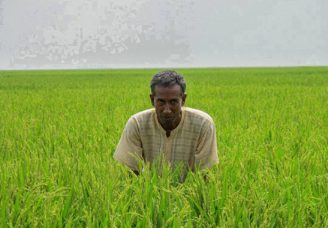
What is Hunger?
Hunger happens when people do not have enough food to eat. The main cause of hunger is not a collective shortage of food but rather access to food – especially nutritious food. Addressing hunger is more than just giving people enough calories.

Some countries have a “hunger season” every year.
Did You Know?
People who suffer chronic hunger don’t have the option of eating when they are hungry. They do not get enough calories, essential nutrients, or both. Worrying about how to feed themselves and their children consumes much of their day.
Some people are hungry because food is in short supply in their area. Others can’t afford to buy enough food. It may be both. Some countries have a “hunger season” every year, when the previous harvest is gone and the next harvest is not yet ready. Hunger season can last as long as three to four months.
The U.S. doesn’t have that kind of a hunger season, but for many – especially low-wage workers, retirees, people with disabilities, and their families – some weeks are hungrier than others. These usually come toward the end of the month, as families run short of food before they have money to buy more. Many families in the U.S. struggle with choosing between food and rent.
Some countries have a “hunger season” every year.

An illness for a worker can mean less food.
What Is Food Insecurity?
People living with food insecurity are especially vulnerable to hunger and lack a stable, reliable means of getting the meals they need. A month of bad weather for a farmer or an illness for a worker and a loss of income can mean less food and the prospect of hunger.
Our goal at Bread is to achieve complete food security: access to safe and nutritious food, at all times, for a healthy life.
An illness for a worker can mean less food.

What Is Malnutrition?
Quantity of food is important, but just as important is quality. When people don’t have the right nutritious food, it’s called malnutrition. Malnutrition is being poorly nourished, whether undernourished or obese.
The most common causes of malnutrition are lack of protein and/or essential vitamins and minerals, frequent illnesses, inadequate health care, and unsafe water (or a combination of these).
Malnutrition can have high costs. U.S. losses from lower productivity and higher healthcare costs have been estimated in the billions of dollars. Developing countries can lose up to 11 percent of their economic output.
Malnutrition is being poorly nourished, whether undernourished or obese.

Around the world, nearly 1 in 4 children under age 5 is stunted.
Hunger, Expectant Mothers, and Children
Hunger is especially dangerous for children and expectant mothers. Every year, 2.6 million children die as a result of hunger-related causes. Even short-term episodes of hunger can cause lasting damage to a child’s development – physically, cognitively and emotionally.
By far the most dangerous time to suffer from malnutrition is early childhood. The effects of hunger and food insecurity can generally be reversed in older children and adults, but getting insufficient nutrients during the 1,000-day period between pregnancy and age 2 causes damage to children that can last a lifetime.
Children who don’t get enough nutrients in early childhood suffer from:
- Stunting — a person who is much shorter than others.
- Lifeline health problems
- Difficulty learning in school
- Lower earning potential over their lifetime
- Difficulty bearing and raising healthy children
Around the world, nearly 1 in 4 children under age 5 is stunted.

